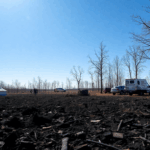Table of Contents
What is Kosmos 482?
Kosmos 482, a spacecraft launched by the Soviet Union in 1972, was originally intended to explore Venus. However, a malfunction during its launch kept it trapped in Earth’s orbit, where it has been slowly decaying for over 50 years.
Now, as it prepares for an uncontrolled re-entry, the world watches with bated breath. The spacecraft weighs approximately half a ton and is expected to re-enter the atmosphere around May 10, 2025, give or take a few days.
Understanding the risks of re-entry
Experts like Dutch scientist Marco Langbroek from Delft University of Technology have been tracking Kosmos 482’s descent. While the spacecraft’s mass is relatively small, the potential for it to break apart during re-entry raises questions about the risks involved.
Langbroek compares the likelihood of being struck by debris from Kosmos 482 to the chance of being hit by a meteorite, which occurs several times a year. He emphasizes that the risk is minimal, stating, “You run a bigger risk of getting hit by lightning in your lifetime.” Nonetheless, the possibility of it hitting someone or something cannot be entirely ruled out.
Where might it land?
The re-entry trajectory of Kosmos 482 is unpredictable, with potential landing zones spanning from 51.7 degrees north to south latitude. This range includes areas as far north as Edmonton, Canada, and as far south as Cape Horn in South America.
However, given that a significant portion of the Earth is covered by water, experts believe there is a good chance that the spacecraft will ultimately land in the ocean. Langbroek notes that the craft’s descent velocity is estimated to be around 242 km/h, which could lead to significant impact if it survives the re-entry intact.
What happens if it survives re-entry?
Concerns have been raised regarding the condition of Kosmos 482 after decades in orbit. The spacecraft’s heat shield and parachute may be compromised, which could affect its descent. Jonathan McDowell from the Harvard-Smithsonian Center for Astrophysics suggests that if the heat shield fails, the spacecraft would burn up upon re-entry, posing no threat to the ground. However, if it survives, the implications could be serious, with a half-ton metal object falling from the sky. The world awaits to see how this decades-old relic of space exploration will meet its fate.





